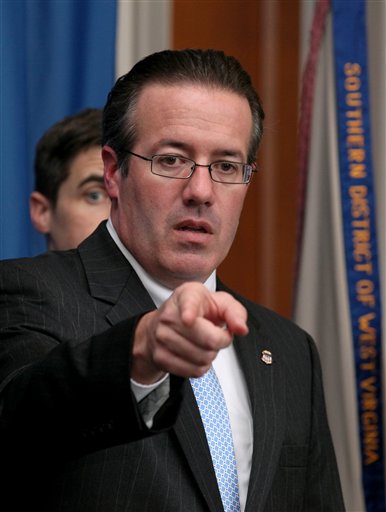Prosecutors seek to block ‘belt air’ argument
October 8, 2015 by Ken Ward Jr.
Federal prosecutors have just filed a new motion in the criminal trial of Don Blankenship, seeking to block the former Massey CEO’s defense team from talking about the controversial subject of “belt air.”
I’ve posted the motion here and this is a bit of what it says:
The defense has introduced argument and evidence in opening statement and cross examination on the proposition that the Mine Safety and Health Administration purportedly forced the Upper Big Branch mine (“UBB”) to adopt a ventilation plan that did not use “belt air.”
For those who don’t know, the term “belt air” refers to refers to air that is directed underground to ventilate worker areas through the same tunnels in which conveyor belts transport coal out of mines.
The topic came up both during defense attorney Bill Taylor’s opening statement on Wednesday and during defense cross-examination of the government’s mine safety expert, Tracy Stumbo. Taylor told jurors:
The MSHA plan was to completely revise the use of belt air and insist that the company stop using belt air to ventilate the longwall. And you will hear that the people at this mine were stunned in August of 2009 when they heard that MSHA was going to insist that they apply this new and first mine in Central App to do this.
And it — and when it, the company tried to make this work — and there are other features of the way the air
flows here — it wouldn’t work. MSHA insisted at one point that they make air go this way off the belt and made air completely stop …
… And you will hear that people from Massey went to MSHA and begged them, “Please don’t make us try to do this. We’ve never — we’ve been doing this safely for 20 years or more. You’re coming in here with a plan and a program that’s never been tried. We can’t make it work.” And, so, for a period of nine months
But, the government’s new motion explains that the new MSHA rules on belt-air ventilation were put into place after the deaths of two coal miners in a conveyor belt fire at Massey’s Aracoma Mine in Logan County in January 2006.
The government’s motion says that Massey never provided a justification for the use of belt air at the Upper Big Branch Mine, so that — as far as the Blankenship trial is concerned — the issue is no more than a disagreement with a mandatory federal safety standard, something the government says U.S. District Judge Irene Berger has said Blankenship isn’t allowed to bring up to the jury.
Assistant U.S. Attorney Gabriele Wohl continued in the government’s brief:
Defendant’s arguments concerning belt air, in addition to contravening the Court’s in limine ruling, are factually infirm. In truth, MSHA granted UBB generous extensions of time to comply with the updated belt air standard, and belt air was used for virtually the entire life of the UBB longwall panel. Moreover, every ventilation plan that was in effect at UBB during the indictment period was proposed by Massey, not MSHA. MSHA does not propose mine ventilation plans on operators’ behalf. MSHA must, of course, reject plans that run afoul of mandatory safety and health standards. Operators may, as a result, submit plans that comply with those standards. But MSHA does not propose plans.
Because Defendant’s argument and evidence concerning so-called belt air is an expression of his disagreement with the requirements of 30 C.F.R. § 75.350(b), it falls under the Court’s existing in limine ruling and must be disallowed.
This evidence has already been excluded by the Court’s granting of the United States’ motion in limine with respect to claims that federal mine safety standards were incorrect or misguided. The Court should prohibit further argument or evidence on this issue.

 Subscribe to the Coal Tattoo
Subscribe to the Coal Tattoo
